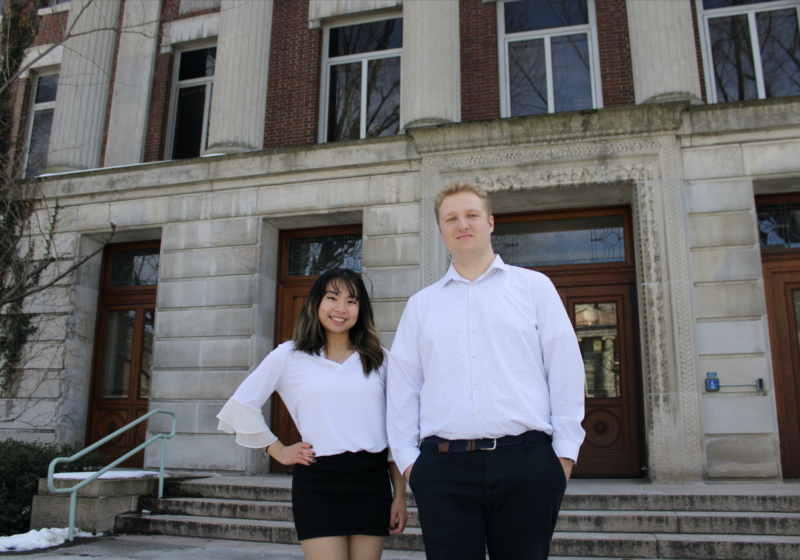The Laboratory for Laser Energetics — a major research facility on campus — may close if a recent budget proposal by the U.S. Department of Energy goes through, prompting concerns from some professors and students.
“We should expect some changes, but a three-year phase-out, which was what was written in the budget proposal, is absurd,” said Professor Wayne Knox, a former director of the Institute of Optics. “The laser lab has brought $2.3 billion into the research portfolio here since the beginning in 1970.”
According to a document released by UR, the lab has had a $51.7 million local impact.
The attention it brings to the optics and other departments here has also distinguished the lab.
“While we have the laser lab, we also have the Institute of Optics, and faculty in other departments such as physics and astronomy and mechanical engineering who are also very well-known in the field of optics,” said David Williams, dean for research in arts, sciences, and engineering. “The laser lab complements their expertise wonderfully and helps to put the city of Rochester and the University on the map.”
Research opportunities for students at the lab will be threatened if the proposal passes.
“The [lab] offers such a perfect learning environment for students and a great place to work for people of varying scientific backgrounds,” said sophomore Jake Rosvold, who works there. “One of the reasons I really wanted to work at the lab was because it offered a place where I could go and apply all that I have learned in classes, but also, it has given me some sort of visual aid for when I’m trying to visualize new concepts.”
Since its 1970 opening, an estimated 1,000 to 1,200 undergraduates have conducted research at the lab, according to John Soures, coordinator and manager at the lab.
Knox said he drew a “straight line” from the lab to his work at his startup company.
The lab has also been home to a number of Ph.D. students, not only from UR, but from universities worldwide. Students have gotten the opportunity to work at the “OMEGA” facility with state-of-the-art lasers, one being one of the most powerful high-energy lasers in the world.
“Over the last two decades, more than 40 universities have participated in experiments at OMEGA, which have led to nearly 175 Ph.D.s,” said senior scientist Professor Dustin Froula, who teaches physics. “This doesn’t include the 330 Ph.D.s that have received their degrees from UR. [The lab] is a premier training institution that attracts and prepares its graduates for work in the national laboratories.”
Many inventions and pioneering technologies have been created there, such as the chirped pulse amplification and a new form of ultra-dense water that is simultaneously liquid and solid.
“The [lab] can achieve very high-energy density conditions inaccessible at any other university laboratory,” said Professor Eric Blackman, who studies physics and astronomy. “Part of its long-term impact has been fundamental research helping a national effort toward inertial confinement fusion.”
Some professors said closure would threaten U.S. leadership worldwide in scientific research and national security.
“More than 2,100 experiments are conducted per year, making award-winning discoveries in fundamental high-energy density science, inertial confinement fusion, extreme materials, planetary science and astrophysics,” said Professor Gilbert Collins, who earned about 200 research publications with colleagues at the lab. “Such research occurs routinely at [the lab], opening new windows to the universe, inspiring scientists of all ages and backgrounds, and forming an integral link in the U.S. national security strategy.
The National Nuclear Security Administration of the Department of Education, which funds the lab with about $70 million a year, proposed a three-year budget request to close down the lab. The body claims the lab’s OMEGA laser facility is “aged.”
Still, students and professors are optimistic that the proposal will fail before Congress. Even so, a few believe that the proposal to close the lab is yet another result of nationwide mistrust in science.
“The U.S. government has been waging war against science, and the laser lab is the latest in their fight for their right to ‘skepticism,’” sophomore and lab research assistant Aaron Goldin said. “Science doesn’t care whether you believe it’s true or not — it is humanity’s best and most systematic way to analyze the world around us. Research into new technologies like nuclear fusion (the main focus of the laser lab) might be expensive, but attempting to close such a facility blocks the progression of human knowledge and information.”





